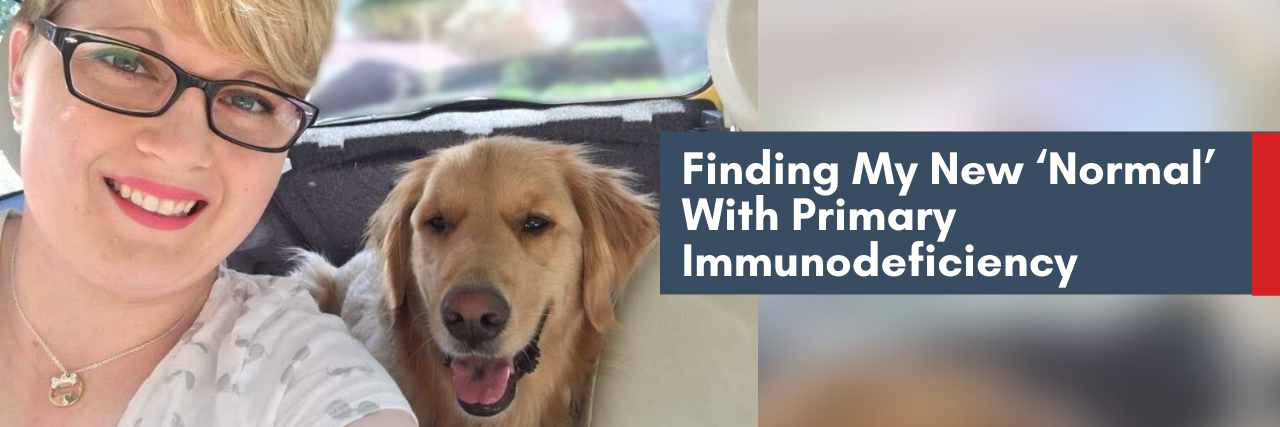I was always a “sick kid.” This meant lots of ear infections, an asthma diagnosis in my early 20s, and more visits to doctor’s offices than I could ever count. In nursing school, I would get sick frequently. It was always brushed off because “everyone catches everything” when you’re in training. But I caught everything. I was getting sick every other month, and it always took me longer to recover. I also experienced constant, severe fatigue. I noticed I needed more sleep than my peers, and I was still tired all of the time.
I was feeling progressively worse, so I started going to specialists to try and find answers. A pulmonologist decided to get my Immunoglobulin G (IgG) levels tested. This one test, which measured the function of my immune system and its ability to fight off infections changed everything. Sure enough, my levels were not very good, so he sent me to see an immunologist. If this doctor had not thought outside the box, and if I had not gotten that one test, who knows when I would have found the answers to my life-long health challenges.
After seeing the immunologist, I finally got the diagnosis that explained everything I had gone through my whole life: common variable immune deficiency, a type of primary immunodeficiency (PI) disease. Living with PI simply means my body’s immune system isn’t working like it should. Unlike autoimmune disorders, where your body is fighting against itself, with PIs, your immune system has trouble fighting at all.1 This explained why I was always more vulnerable to infections and why it always took me so long to recover. PI is rare, affecting 1 in 1,200 people in the U.S.2, and there are over 450 different types.3
My family, especially my parents, was overjoyed at my diagnosis because now we knew what was going on and could do something about it. It was also nice to have validation. Doctors had accused me of faking it and had dismissed my symptoms in the past.
For me, though, the relief was complicated. Getting this diagnosis meant acknowledging I was a “sick person” who had a chronic condition that wouldn’t go away. Like other people who face health challenges, it’s hard to pretend you don’t want to be “normal” every once in a while. Unfortunately, my unwillingness to accept the reality of my condition affected my decisions about treatment. I was willing to try different antibiotics, but getting immunoglobulin (Ig) therapy like my doctor recommended, which replaces the antibodies (immunoglobulins) that are missing or not working properly in people with PI, intimidated me.4
After two years, I finally got so sick my doctor simply said, “Listen, this isn’t working.” I agreed that Ig therapy was worth trying. Despite my initial hesitation, I was relieved when we finally started. I was able to get my infusions at home (I’m a nurse, and didn’t want to spend even more time at the hospital!). My mom is a nurse too, so in the beginning it was comforting to know she’d be right there with me.
The management plan that my doctor and I agreed on together has become part of my new normal, and my husband and I use my weekly infusions to spend time together. We’ll order pizza, watch a movie, and snuggle up with our dog. Now, I personally understand the importance of donating plasma. Plasma is a specific part of the blood filled with immune cells needed to fight off infections — and it’s how they can make IgG therapies.5,6 When people donate plasma, it makes these therapies available for people like me.
I want people with PI to know that even though our “normal” might look different, I got married, am looking forward to having a family, and have hobbies I enjoy. I love crafting, painting, and have a weird obsession with tie dye. I’ve also been lucky to have such a supportive family, and the connections I’ve made through MyIgSource have been invaluable as well. MyIgSource is a unique community with helpful information, resources, and peer-to-peer support for those living with primary immunodeficiency.
Now, I’m in my 30s and pregnant with my first child. When the doctor said everything was “normal” for the baby at my 20-week ultrasound, I cried tears of joy. I had never heard a doctor say that to me before. For my child, having a mom with PI will be his normal, and we’ll navigate life with it together.
1 Ballow, M., et al., (2019). Antibody Immune Deficiencies. In Patient & Family Handbook for Primary Immunodeficiency diseases (6th ed., pp. 18–20). Textbook, IDF Immune Deficiency Foundation.
2 McCusker, C., Upton, J., & Warrington, R. (2018). Primary immunodeficiency. Allergy, Asthma & Clinical Immunology, 14(S2), 2. https://doi.org/10.1186/s13223-018-0290-5
3 Immune Deficiency Foundation. About Primary Immunodeficiencies | Immune Deficiency Foundation. (n.d.). Retrieved March 16, 2022, from https://primaryimmune.org/about-primary-immunodeficiencies
4 Ballow, M., et al., (2019). Antibody Immune Deficiencies. In Patient & Family Handbook for Primary Immunodeficiency diseases (6th ed., pp. 23). Textbook, IDF Immune Deficiency Foundation.
5 Ballow, M., et al., (2019). Antibody Immune Deficiencies. In Patient & Family Handbook for Primary Immunodeficiency diseases (6th ed., pp. 13). Textbook, IDF Immune Deficiency Foundation.
6 Liebe, R. (2020, January 23). Plasma. Plasma Protein Therapeutics Association (PPTA). Retrieved March 16, 2022, from https://www.pptaglobal.org/plasma
US-NON-7336v1.0 04/22


